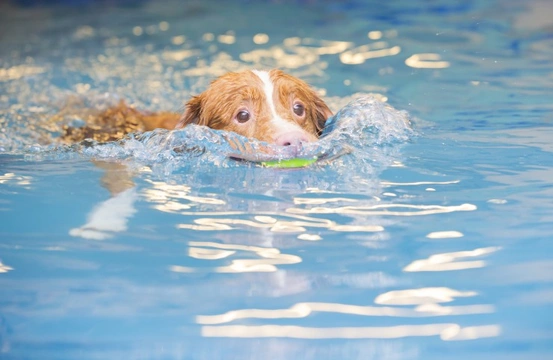
Teaching Your Dog to Swim: Safe Step-by-Step Guide
Many people believe dogs instinctively know how to swim, but this isn't always true. While dogs can paddle to keep afloat, introducing them to water without preparation can be risky and may cause fear. Whether your dog is a puppy or adult, it’s important to help them learn to swim safely and confidently.
This detailed guide will walk you through how to introduce your dog to swimming with kindness, patience, and safety to make their first experience enjoyable and stress-free.
Is Your Dog Physically Able to Swim?
Not all dogs can swim comfortably due to their physical build. Some breeds may struggle to stay buoyant or coordinate paddling and breathing. Before teaching your dog to swim, assess their physical capabilities.
- Heavy, muscular breeds: Dogs like the Staffordshire Bull Terrier, American Bulldog, and English Bulldog often find swimming difficult because of their body structure.
- Brachycephalic breeds: Short-nosed dogs such as Pugs and Boxers may face challenges keeping their nose above water.
- Short-legged breeds: Dogs like Dachshunds and Basset Hounds may struggle to paddle effectively.
If your dog matches any of these categories, always supervise around water and consider using a life jacket for safety.
Step-by-Step Guide to Teaching Your Dog to Swim
Step 1: Choose the Right Location
Pick a calm, safe area such as a paddling pool, a still pond with a gentle slope, or a quiet shallow lake. Avoid strong currents, steep drop-offs, or water that’s too cold.
Step 2: Warm Up Your Dog
Before entering the water, engage your dog in light exercise like a walk to warm their muscles and prevent injury.
Step 3: Introduce Water Gently
Allow your dog to explore the water’s edge at their own pace. Encourage sniffing and paw dipping without pushing them in.
Step 4: Use a Life Jacket When Needed
If unsure about your dog’s swimming ability, fit a well-fitted canine life jacket with a handle. This provides buoyancy and makes supporting your dog easier.
Step 5: Encourage Progress with Positive Reinforcement
Walk into the shallow water yourself, call your dog gently, and offer praise and treats. Toss a floating toy a short distance to motivate them to enter further.
Step 6: Support Your Dog in Deeper Water
When your dog steps beyond where their paws touch bottom, support them under the belly to help them get used to paddling. Encourage front leg movement and gently tilt the rear to prompt hind leg kicks.
Step 7: Let Your Dog Explore and Swim Freely
Once buoyant, remove your support and allow your dog to swim about. Use toys to keep the experience fun and rewarding.
Step 8: Provide a Safe Exit and Aftercare
Always show your dog the way out of the water. Praise them when they leave voluntarily. Afterwards, rinse your dog with clean water to remove contaminants and dry their coat and ears thoroughly to prevent infections.
Safety Considerations and Breed-Specific Advice
Always supervise your dog near water and never leave them unattended, especially in open bodies of water. For breeds with special considerations like brachycephalic dogs, swimming can be physically taxing—limit swim sessions and watch for signs of fatigue or distress.
Wearing a life jacket yourself is wise to protect you if your dog panics and tries to climb on you for reassurance. Teach your dog gradually, keeping all sessions positive to build confidence and ensure they enjoy swimming for life.
Why Patience and Positive Experiences Matter
Swimming is new and strange for many dogs. Forcing them into water or rushing the process can cause lasting fear. Instead, using patience, encouragement, and treats turns swimming into a positive adventure. Some dogs may take several sessions to feel comfortable, and that’s perfectly normal.
Consider letting your dog see another confident swimming dog to learn by observation, as social learning often helps. With your care and support, your dog can develop into a happy and safe swimmer that looks forward to water activities.



